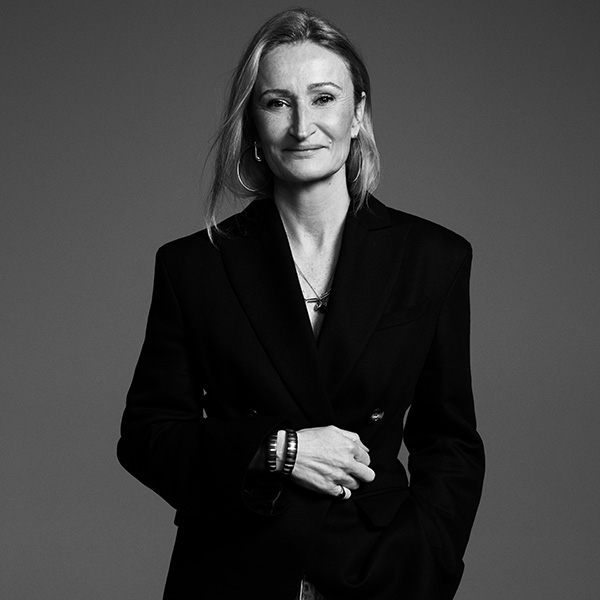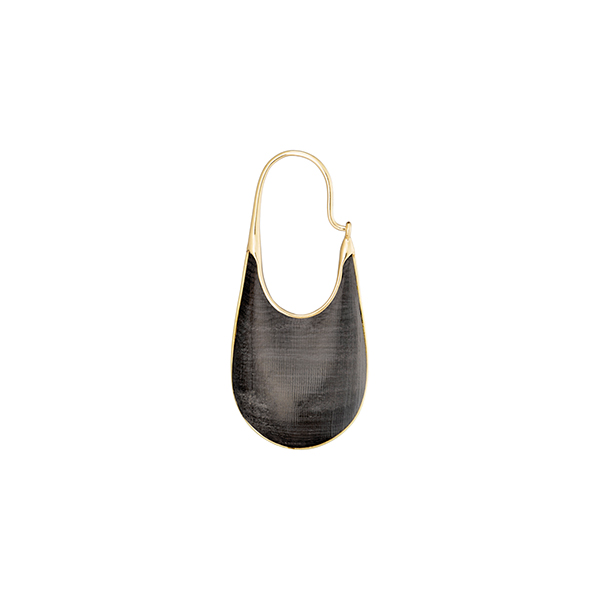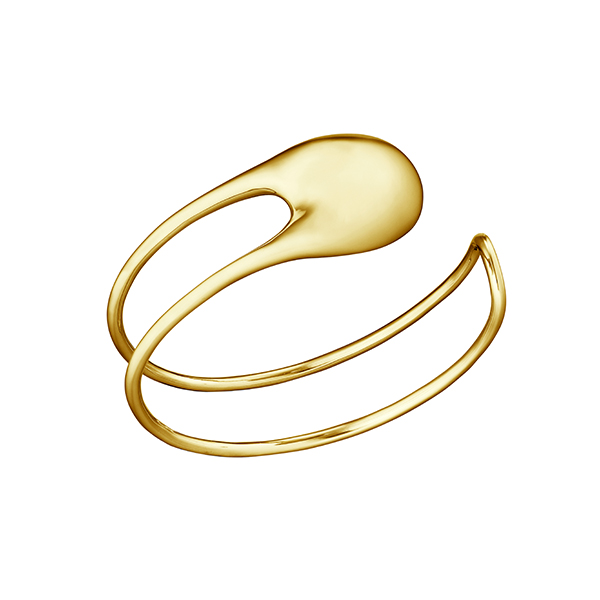
With her architecture expertise, Sarah Müllertz (pictured) can visualize a space from start to finish, considering every detail and how it will affect flow, furniture layout, and what it would be like to live or work there.
Müllertz does the same with her jewelry brand, Kinraden. She applies the skills she learned from decades in architecture, thinking deeply about all aspects of jewelry design and creation, including the materials and people involved.
For example, Kinraden does not support the mining of precious gems, so she either uses vintage stones or shuns them entirely. To obtain that feeling of luxury and longevity, Müllertz has chosen a unique material—mpingo wood—along with recycled 18k gold and sterling silver.

Mpingo is a rare and visually arresting wood traditionally used to make musical instruments, such as oboes and clarinets. Müllertz first came across it while working on an architecture project, and its beauty and precision inspired her. Kinraden buys the leftovers from instrument production—the mpingo is sourced from a forest in Tanzania protected by the World Wildlife Fund (WWF) and certified by WWF’s forest management arm, the Forest Stewardship Council (FSC).
“It’s a beautiful way to upcycle and stay true to my vision of sustainability,” Müllertz says. “It took years to find the right suppliers and setup, and sustainability is an ongoing process. It requires constant innovation and collaboration, but that’s what makes it worthwhile.”
Based in Copenhagen, Kinraden originated in 2014 as a passion project, with ideas about sustainability, gentle production, and a circular business model at its core. Since 2019 Müllertz has devoted most of her time to developing the brand—though she’s still in the architecture field, consulting in interior design, concept design, and space planning.
Art, culture, and creativity have always been part of Müllertz’s life. She grew up in the Danish countryside, with what she calls a “classical” upbringing.

“My parents were deeply immersed in the arts—ballet, music, literature,” says Müllertz. “Wherever we traveled, visiting the local church and museum was a priority.… My teenage rebellion was falling in love with modern art and architecture.”
One of the first jobs Müllertz had that informed her thinking on art was being an assistant to Danish painter Martin Bigum, where she had an opportunity to paint for him.
“It was a unique experience that taught me the importance of precision, discipline, and creativity. Those lessons have stayed with me throughout my career, whether in architecture or jewelry,” Müllertz says.
She studied architecture at the Royal Danish Academy in Copenhagen. After earning her master’s degree in 2005, she worked as an architect, with a focus on interior design, for many years.
“I found myself growing weary of designing spaces like office buildings, feeling as thought I was contributing more clutter to the world. I wanted to do something different, something more meaningful,” Müllertz says. “Alongside architecture, I had always dabbled in jewelry, which eventually became my focus.”

She was drawn to jewelry for its simplicity and the purity of its materials.
“Jewelry felt like a natural extension of my desire to create, to work with my hands, and to design something functional and beautiful on a smaller scale,” Müllertz says. “My jewelry philosophy is grounded in circularity—using sustainable materials, ensuring fair wages for everyone in the supply chain, and creating a business model that is as circular as the materials we work with.”
Kinraden’s newest collection, Eternal Echoes, which debuts Oct. 31. was inspired by architect Carlo Scarpa’s masterpiece, the Tomba Brion in Altivole, Italy. The four pieces in Eternal Echoes—Unity ring, Arch bracelet, Symmetry earrings, and Reflection pendant—reflect Scarpa’s dedication to detail and his influences of Venetian art, modernism, and cultural philosophies, Müllertz says.
“Carlo Scarpa’s Tomba Brion is more than a resting place—it’s a study in precision and profound spatial experience,” Müllertz says. “I aim to distill this architectural ethos into jewelry, creating pieces that echo his structural beauty and reverence for detail, bringing the balance of nature and minimalist design into wearable art.”
(Photos courtesy of Kinraden)
Follow JCK on Instagram: @jckmagazineFollow JCK on Twitter: @jckmagazine
Follow JCK on Facebook: @jckmagazine





